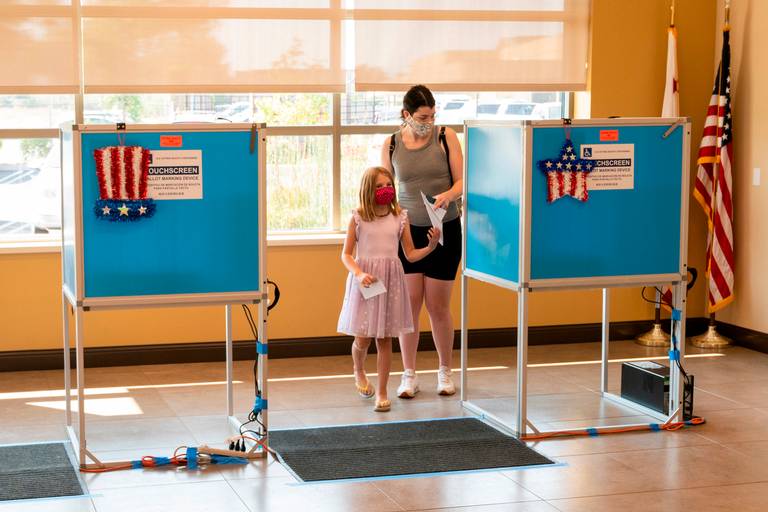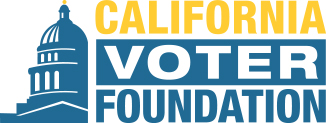But more transparency wouldn’t hurt. Here's why
(online at https://www.sacbee.com/opinion/op-ed/article254235563.html, photo credit Lezlie Sterling, Sacramento Bee)
 There is a growing chorus claiming that California’s recall election is not secure.
There is a growing chorus claiming that California’s recall election is not secure.
Some claims come from people providing no evidence to back them up and no substantiation of fraud. Some come from people who question aspects of California’s election administration practices that they don’t understand (like the use of accessibility holes by some counties in ballot return envelopes to help guide low-vision voters to the signature box).
Some are fueled by a dramatic incident where 300 ballots were found in a man’s car in Southern California, leading some to allege it was evidence that people are trying to steal the election (while this case is still under investigation, it appears likely the ballots were collateral damage in a case of attempted mail theft to rob people of checks, not ballots).
Compared to other states, California makes it easy for people to vote. But making voting simple for eligible citizens is, in fact, a complex task for state and county election officials. Every county does things a little differently, from how they lay out their ballots and what their ballot return envelopes look like, to what kind of in-person voting options are available, whether it’s at neighborhood polling places or county-wide vote centers.
These differences contribute to misinformation and confuse voters, which is why we need more consistency statewide in how Californians participate in and experience elections. This can be achieved with the state requiring counties to give voters similar voting options and experiences and paying a fair share of election administration costs.
While some have raised fears about the breach of a voting system vendor’s software at a recent event, the possibility of a software leak is a well-known election security risk which election officials plan for.
In California, every vendor’s voting system software source code is reviewed for potential security vulnerabilities. Hardware is stress- and volume-tested. The results of vendors’ tests are publicly posted on the Secretary of State’s website. Many election security experts view California’s voting system testing and certification process as the most rigorous and transparent in the nation.
Adding another layer of security to our state’s voting process, California was one of the first states in the nation to mandate voter-verified paper trails when utilizing computerized voting systems precisely because of potential risks like a software leak.
A final layer of security comes from our state’s required post-election audits which have been mandated for over half a century in California, ever since software vote counting was first introduced in the 1960s.
Every county election office must select ballots from 1% of their precincts at random and publicly recount those ballots by hand to show the hand-counted totals match the software-counted results. Anyone can go and watch this process.
California also has laws and regulations to protect and preserve the chain of custody of ballots and equipment and ensure two people are with ballots at all times, as well as strong penalties for election interference.
In light of the alarming and unsubstantiated claims that have been made, California’s Secretary of State and local election officials need to be transparent about how we verify election results, and should work to raise awareness of the state’s long-standing election verification laws and security procedures. They also need to improve how the results of post-election audits are reported to the public.
California’s elections are complex and can be confusing for people to understand. That doesn’t mean our state’s election process is insecure. But it does mean that election officials need to continue to be transparent about how our state’s elections work.
Kim Alexander is president and founder of the California Voter Foundation, a nonprofit, nonpartisan organization working to improve the voting process. Michael Alvarez is a professor at Caltech and co-director of the Caltech/MIT Voting Technology Project.

